Sports Figures of the Boston-Edison Historic District
Walter O. Briggs
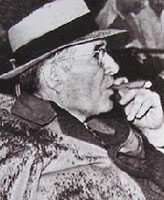
Walter O. Briggs was born in Ypsilanti in 1877 and worked for Everitt Carriage Works in the early 1900s, eventually buying the company and changing the name to Briggs Manufacturing in 1909. Briggs specialized in the making of automotive car bodies, supplying bodies to manufacturers such as Ford, Chrysler, Packard, Hudson, and Willys-Overland. Briggs owned the company until his death; the company survived until 1997 when it was purchased by a South American conglomerate.
Briggs was a life-long Tigers fan. In 1919, Briggs purchased stock in the Detroit Tigers from Frank Navin, becoming sole owner after Navin's death in 1935. He vowed he would never take a cent of profit from his investment, and immediately began plowing revenue back into the team. He expanded the Tiger's playing field, increasing seating capacity to 52,000, and opened it in 1938 as Briggs Stadium. He also spent money on baseball talent. Under Briggs's ownership, the Tigers won the AL pennant in 1940 and the World Series in 1945. Briggs owned the Tigers until his death in 1952.
In 1915, Briggs moved into Boston-Edison at 700 W. Boston Boulevard, where he lived until his death in 1952.
Read more about Briggs Manufacturing, or read a book about Brigg's years with the Tigers.
Ty Cobb
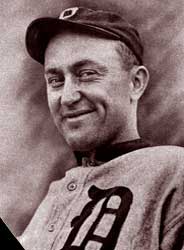
Cobb was born in Georgia and spent a few years playing semi-pro baseball. Frank Navin brought Cobb into the Tiger's organization in 1905, and Cobb played center field for the Tigers from then until 1926. Cobb's on-field career was stellar; at one time or another his held over 90 baseball records. Cobb still holds the major league records for highest career batting average (.366) and most career batting titles (11). In 1921, Navin signed Cobb as the Tigers' manager; Cobb worked as player/manager until 1926. Cobb retired from baseball two years later. In 1936, Cobb was elected to the baseball Hall of Fame in the inaugural ballot, earning more votes than the other four players elected that year (Babe Ruth, Honus Wagner, Christy Mathewson and Walter Johnson).
Ty Cobb lived at 800 Atkinson (just south of Boston-Edison).
Read more about Ty Cobb at his official home page or Wikipedia.
Bela de Tuscan
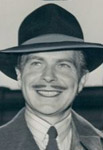
Bela de Tuscan won the 1919 national sabre title in Hungary before a failed revolution forced him to emigrate to the United States; he barely escaped with his life. He taught fencing at Syracuse University from 1923-1925, at the University of Michigan from 1928-1930, and at Wayne State University from 1932-1957. He also taught private lessons at his own Salle de Tuscan in Detroit. In 1930, he married future fencing world champion Joanna Savich. They toured Europe in the 1930s, holding exhibitions and demonstrating a new electric scoring system developed by Bela.
Bela toured with the USO during World War II, after which he returned to Detroit. In 1958, Bela moved to Fort Lauderdale, FL, with his second wife, Normaleen, where they set up anorther salle.
Bela and Joanna de Tuscan rented the garage apartment at 700 Longfellow in the mid-1930s.
Joanna de Tuscan
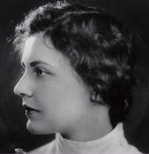
Joanna Savich was born in 1908 in Detroit. She pursued swimming, horseback riding, and ballet as a child, as well as studied art at the Rhode Island School of Design. In the late 1920s, she began studying fencing with Hungarian fencing master Bela de Tuscan; the two married in 1931. Joanna quickly moved from novice to master, winning Michigan and Midwest championships in the foil. According to the rules of the day, female fencers wore divided skirts. Joanna opted to wear custom knickers instead, becoming the first woman fencer to wear pants. She tried out for the 1936 Olympic team, becoming the captain.
After the Olympic games, Joanna turned pro, appearing in advertisements for Wheaties, and eventually becoming the international professional women's champion. Bela and Joanna toured Europe, giving fencing exhibitions and demonstrating a new electric scoring system. In the process, Joanna became the first woman to fence with a saber. During World War II, Joanna joined the USO and piloted planes for the Civil Air Patrol. She later became a Hollywood fencing double.
Bela and Joanna de Tuscan rented the garage apartment at 700 Longfellow in the mid-1930s.
Read more about Joanna de Tuscan at Women of Action; or read an interview with her (pdf).
Walter Dukes
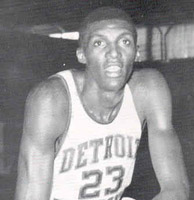
Walter Dukes was born in 1930 in Rochester, New York. He was a center for Seton Hall, playing for two seasons. In 1952-53, Dukes led Seton Hall to an NIT championship with 734 rebounds, an NCAA record that still stands. Dukes left college early and played two years for the Harlem Globetrotters, then jumped to the NBA, playing a year each for the Knicks and Lakers before arriving in Detroit. Dukes played six years for the Pistons, from 1957/58 through 1962/63. He was named to two All-star squads, in 1960 and 1961. He later practiced law in Detroit, and died in 2001.
Walter Dukes lived at 1980 Chicago beginning in the mid-1960s.
Read more about Walter Dukes in the New York Times.
Harry Heilmann
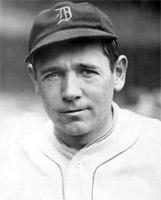
Heilmann was born in California and came to the Detroit Tigers in 1914. He spent 1915 in the minors, then returned to the Tigers in 1916, playing with the team until 1929. Heilmann played primarily right field (alongside Ty Cobb in center), but also spent time at first base. Through the teens, Heilmann improved as a ballplayer, and won the AL batting title four times: in 1921, 1923, 1925, and 1927.
After retiring from baseball, Heilmann joined Ty Tyson in the broadcast booth in 1934 and announced Tigers games; when Tyson retired, Heilmann continued announcing until 1950. He was elected to the Hall of Fame six months after his death, in 1952.
Heilmann lived at 2225 Edison in the 1940s, where Patrick H. O'Brien once lived.
Read more about Harry Heilmann at Wikipedia.
Willie Horton
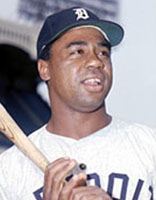
Willie Horton was born in 1942 in Virginia, the youngest of twenty-one children. He attended Detroit Northwestern High School, and signed with the Detroit Tigers in 1961. His major league debut was late in the 1963 season; he played sparingly until the 1965 season when he was second in the AL with 104 RBIs. He played with the Tigers as a left-fielder until 1977. During that time, he was an AL All-Star four times, and was instrumental in the Tigers' 1968 World Series championship. In 2000, his number was retired by the Tigers.
Horton lived at 112 Edison (once owned by Michigan Supreme Court Chief Justice Franz C. Kuhn) in the 1960s.
Read more about Willie Horton at Wikipedia.
Clarence E. "King" Lehr
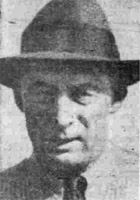 Clarence E. Lehr was born in 1886 in Escanaba, and grew up with an interest in sports. He started on a professional baseball career, playing in Buffalo and in 1911 as an infielder for the Philadelphia Phillies, by which time he had already acquired his nickname. However, after that year in the majors, he decided to quit baseball, and attended the University of Michigan, graduating with a law degree in 1914. He became a attorney for the Bohn Aluminum Company. In 1933, when horse racing was legalized in Michigan, he organized the Detroit Racing Association and leased the track at the fairground for races. Lehr was famous as a colorful figure in the sport, and for his clashes with State officials. He remained head of the Association and chairman of the board until his death in 1948.
Clarence E. Lehr was born in 1886 in Escanaba, and grew up with an interest in sports. He started on a professional baseball career, playing in Buffalo and in 1911 as an infielder for the Philadelphia Phillies, by which time he had already acquired his nickname. However, after that year in the majors, he decided to quit baseball, and attended the University of Michigan, graduating with a law degree in 1914. He became a attorney for the Bohn Aluminum Company. In 1933, when horse racing was legalized in Michigan, he organized the Detroit Racing Association and leased the track at the fairground for races. Lehr was famous as a colorful figure in the sport, and for his clashes with State officials. He remained head of the Association and chairman of the board until his death in 1948.
"King" Lehr lived at 1472 Longfellow from 1920 until his death in 1948.
Joe Louis

Joe Louis was born in 1913 and moved to Detroit at the age of 10. He boxed as an amateur in his teens, eventually winning Michigan's Golden Glove title. He turned pro in 1934, under the management of John Roxborough, and won a string of fights, many by knockout. In 1937, he was awarded a title shot, and knocked out James Braddock to become the heavyweight champion of the world.
Louis went on to defend his heavyweight title 25 times, including his crushing defeat of German boxer (and Hitler's favorite) Max Schmeling, the one man who had beaten Louis earlier. Louis served in the Army from 1942 to 1945 and spent that period traveling around Europe visiting with the troops and boxing in exhibitions. He retired from boxing, unbeaten as heavyweight champion, in 1949. Joe Louis died in 1981, and is buried in Arlington National Cemetery. The Joe Louis Arena in downtown Detroit is named in his honor.
Joe Louis lived at 1683 Edison.
Read more about Joe Louis at his official home page or Wikipedia.
Frank Navin

Frank Navin was born in Adrian, MI, and came to Detroit to attend the Detroit College of Law. In 1902, he worked for Samuel F. Angus when Angus purchased the Detroit Tigers. Angus immediately installed Navin in the Tiger's front office. The next year, Navin bought $5000 of stock in the team. Navin had an eye for talent, signing (among others) Ty Cobb, and built a team that won three straight AL pennants in 1907-1909.
Navin became majority shareholder in the Tigers in 1907, retaining control of the Tigers until his death. In 1911, Navin built a new ballpark with a seating capacity of 23,000, naming the new park Navin Field. He brought Walter Briggs into the organization as a minority shareholder in 1919. In 1927, Navin became acting president of the American League. The Tigers one two more AL pennants in 1934 and 1935, and finally won the 1935 World Series, the first Series win under Navin's leadership. Six weeks later, Navin suffered a heart attack and died.
Frank Navin lived at 36 Longfellow Ave from the 1900s until his death in 1935.
Read more about Frank Navin on Wikipedia.
John W. Roxborough
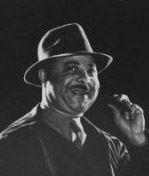 John Roxborough was born in Detroit in 1892. He ran a real estate business that fronted a numbers operation in Paradise Valley, and in 1931 met then-17-year-old Joe Louis. Roxborough encouraged Louis's boxing aspirations, and became his manager when Louis turned pro in 1934. He remained his manager through Louis's last fight in 1949. He later owned the Suoerior Life Insurance Company of Michigan. Roxborough also helped out youth groups around Detroit with their sports interests. Roxborough died in 1975.
John Roxborough was born in Detroit in 1892. He ran a real estate business that fronted a numbers operation in Paradise Valley, and in 1931 met then-17-year-old Joe Louis. Roxborough encouraged Louis's boxing aspirations, and became his manager when Louis turned pro in 1934. He remained his manager through Louis's last fight in 1949. He later owned the Suoerior Life Insurance Company of Michigan. Roxborough also helped out youth groups around Detroit with their sports interests. Roxborough died in 1975.
John W. Roxborough lived at 2080 W. Boston in the 1950s.
George Slaton
George Henri Slaton was born in 1907, and at age 23 became the manager of welterweight boxer Paul Thurmon. As he became more prominent, he trained more and more amateur boxers at Detroit's Brewster Recreation Center. Among these was young heavyweight Joe Louis, who , under Slaton's training, made it to the final round of the national Golden Gloves tournament in 1933, and won the Amateur Athletic Union national light heavyweight championship the next year. George Slaton was married to Judge Jessie P. Slaton; he died in 1975.
George and Jessie Slaton lived at 1232 W. Boston in the 1950s and 1960s.
Paul "Dizzy" Trout

Dizzy Trout was born in Indiana and was signed as a pitcher by the Tigers in 1939. He pitched for the organization for 14 years, including the World Series years of 1940 and 1945. His best years were during WWII. He led the AL in wins in 1943, in 1944 had the best ERA and came in second (to teammate Hal Newhouse) in the MVP voting, and in 1145 went 1-1 in the World Series with a 0.66 ERA. After retiring from baseball, Trout broadcast the play-by-play for Tigers games from 1953 - 1955.
Dizzy Trout He lived at 2024 Edison in the 1950s and 1960s.
Read more about Dizzy Trout on Wikipedia.
Ty Tyson

Ty Tyson began his career as a radio announcer at WWJ in 1922, and called the first University of Michigan football game to be broadcast on the radio. He broadcast the first play-by-play account of a Tigers game in 1927 (which was, indeed, the first regular season baseball game covered by radio in the country), and he covered the Tigers until 1940 (being joined in the booth by Harry Heilmann. Tyson founded the Detroit Sports Broadcasters Association in 1948 and was its first president.
Ty Tyson lived at 758 Atkinson (just south of Boston-Edison).
Read more about Ty Tyson in the Detroit News or on Wikipedia.

